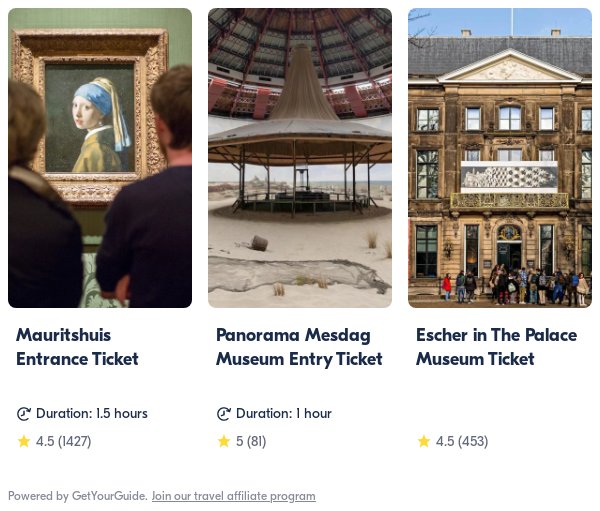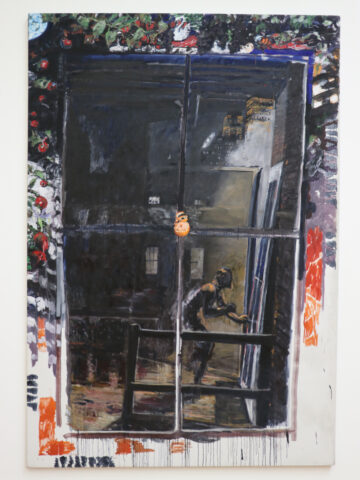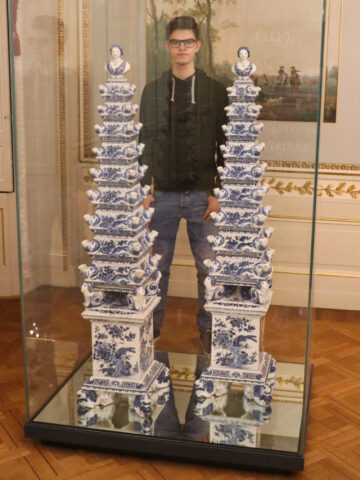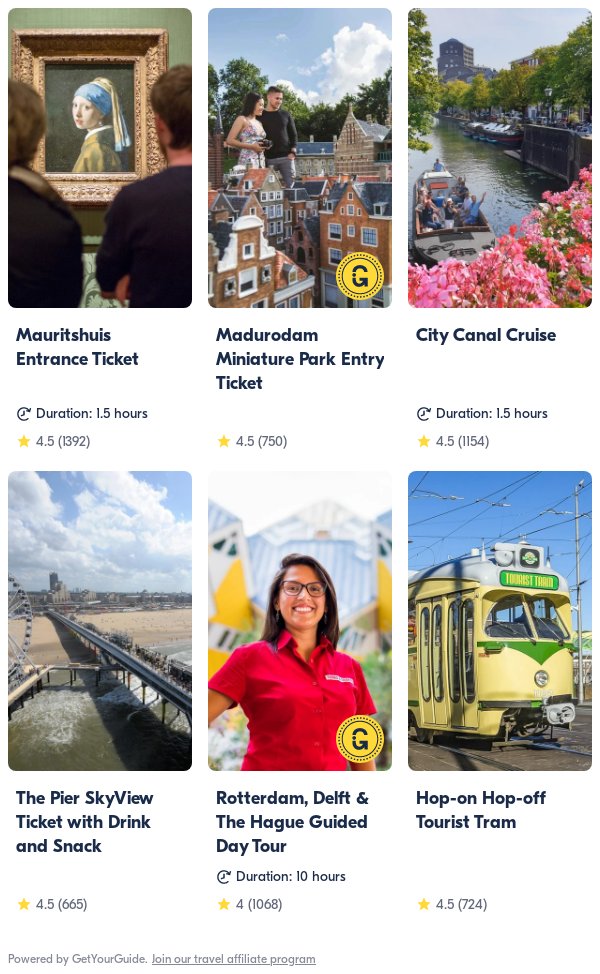The Kunstmuseum Den Haag in The Hague is a top modern art museum in the Netherlands with the largest collection of Piet Mondrian paintings in the world.
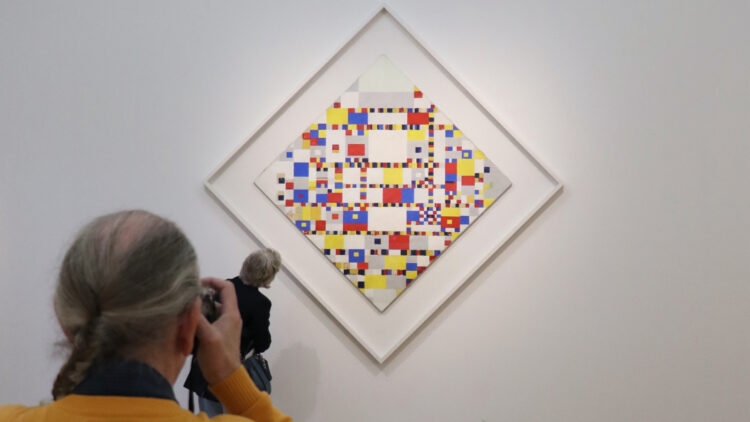
The Kunstmuseum Den Haag is a modern art museum in The Hague, South Holland, exhibiting mostly early 20th-century art. It is world famous for the largest collection of paintings by Piet Mondrian including his last work Victory Boogie-Woogie. The semi-permanent displays are mostly of paintings of the first half of the 20th century, Mondrian and De Stijl works, and Delftware but the museum also has sculptures, graphic art, and prints from all significant European artists. Temporary exhibitions change frequently and cover all genres, themes, and artists from the late 19th century to the present. Buy Kunstmuseum Den Haag time-slot reservation tickets online to skip the lines and ensure admission on busy days.
Kunstmuseum Den Haag in Holland
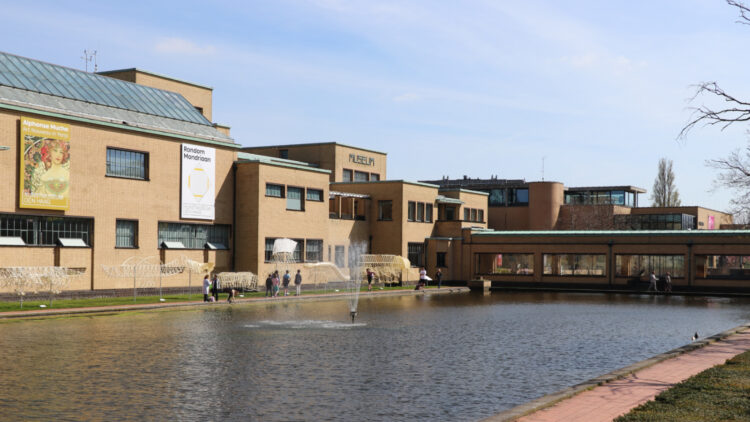
The Kunstmuseum Den Haag (Art Museum The Hague — it was previously less descriptively known as the Gemeentemuseum / municipal museum) is a modern art museum of works in various formats from the late 19th century to the present.
The Kunstmuseum is located in a purposedly-designed museum building from the 1930s by Dutch architect H P Berlage. The building is a Gesamtkunstwerk and has a dedicated following amongst lovers of architecture from the period. His modern building, which has natural light in each room, follows straight lines and a modern color scheme that is still in use. Almost all measurements in the museum are divisible through the 11 cm that he used as the base for his designs.
Berlage designed the museum to be of a human scale — exhibition rooms are never too big, doorways are never positioned in line, and no space should seem more important than any other. The museum continues to follow his principle that there is no set recommended route to follow through the museum — visitors should simply lose themselves in the art and wander through the displays on a whim. (This, and the scarcity of any maps, is slightly frustrating on a first visit but certainly not unpleasant for visitors able to spend much time in the museum.)
Exhibitions in the Kunstmuseum Den Haag
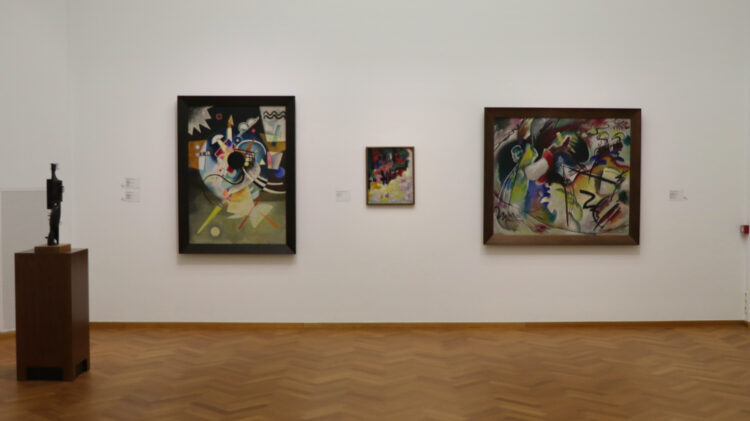
The Kunstmuseum Den Haag has three semi-permanent main exhibitions, which are enhanced by frequently changing temporary exhibitions. The temporary exhibitions may be of the museum’s own collection or frequently in collaboration with other museums. These range in theme and scope but are mostly of twentieth-century art.
The four permanent exhibitions are:
Mondrian & De Stijl: the famous Dutch style from after the First World War — although primary colors (red, yellow, and blue) are dominant, the art is vibrant and much more than just geometric drawings. In addition to the large number of Mondrian paintings in the Kunstmuseum Den Haag, many further De Stijl works are on display including by among others co-founder Theo van Doesburg as well as Bart van der Leck, JJP Oud, Vilmos Huszar, and Gerrit Rietveld.
Ontdek het moderne / Discover the modern: a selection of the top influential works in the museum’s collection of modern art from the late 19th century to especially the mid-20th century but some contemporary works too. The Discover the Modern exhibits the pioneering works by modern artists — mostly through paintings but also a selection of sculptures, models, fashion, drawings, and furniture.
Het Wonder van Delfts Blauw / Delftware Wonderware: a small but beautifully displayed selection from the museum’s vast collection of mostly blue and white Delftware. Delftware is imitation porcelain produced in particularly Delft near Den Haag from the early 17th century as an alternative to the far more expensive Chinese porcelain that reached the European market through the enormously profitable Dutch East India Trading Company (VOC).
Wonderkamers / Chambers of Wonder: in the cellar and an interactive display mostly aimed at children.
The exhibitions in the Kunstmuseum are mostly from early to mid-20th-century art but contemporary pieces are also scattered throughout the galleries. In The Hague, contemporary art is mostly on display in the adjacent KM21 (abbreviation of Kunstmuseum 21st Century), which also includes the Museum of Photography, while the Mauritshuis is an internationally acclaimed jewel of Golden Age old masters.
Mondrian in the Kunstmuseum Den Haag

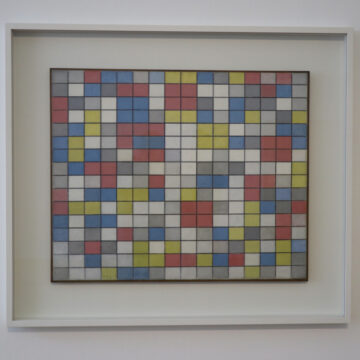

The Kunstmuseum Den Haag famously has around 300 works and thus the largest collection in the world of artworks by Piet Mondrian, including the Victory Boogie-Woogie, his last work. Mondrian is always on show in this museum — if not in a special exhibition, then in the permanent displays (and often in both).
Pieter Cornelis Mondriaan (1872 to 1944), after 1906 simply Piet Mondrian to blend in with the avant-garde artists in Paris, was one of the most influential artists of the early 20th century. He changed his painting style from figurative to abstract and famously reduced his work to simple geometric elements.
He co-founded De Stijl (The Style) art movement in which he first defined his theory of neoplasticism. His works in this style are the most famous. He reduced his expressions to the three primary colors (red, yellow, and blue), the primary values (black, gray, and white), and used only horizontal or vertical lines and shapes.
Mondrian Paintings in the Kunstmuseum Den Haag
The Kunstmuseum’s collection of Mondrian paintings covers his entire artistic life and includes the landscapes, pastoral scenes, and windmills of the young student. Exhibitions frequently show his progression from impressionist to post-impressionist, increasingly abstract, dabbling with cubism, and finally his own style of neoplasticism that he mainly used during the final two decades of his life.
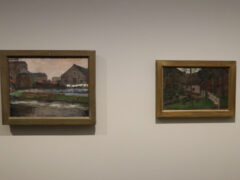

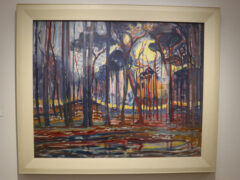
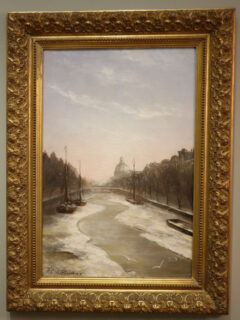
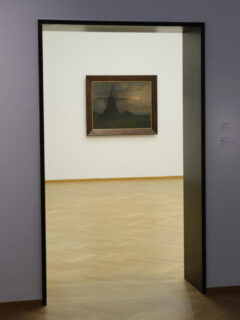

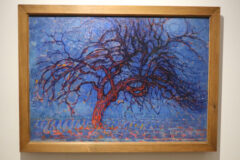
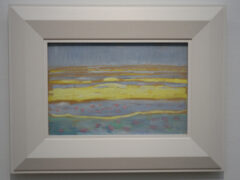

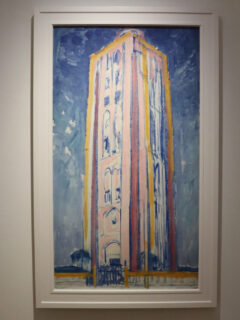



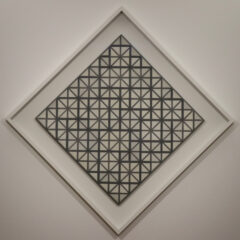

A highlight of the museum is his Victory Boogie-Woogie — his final painting that was thought completed but which he started altering just days prior to his death from pneumonia. It was left with many small color tape squares that he had not re-painted yet. The painting was bought somewhat controversially by the Dutch government for 82 million guilders (around €35 million at the time) in 1997 partly to commemorate the introduction of the euro as new currency. It is considered too fragile to travel so is almost permanently on show in the Kunstmuseum.
Mondrian paintings are currently hung in the Discover the Modern and Mondrian & De Stijl permanent exhibitions but are also frequently used in temporary exhibitions in the museum.
Highlights in the Modern Art Museum in The Hague
![Egon Schiele [1890-1918] Portrait of Edith](https://www.european-traveler.com/wp-content/uploads/2022/05/Schiele-Edith-360x480.jpg)
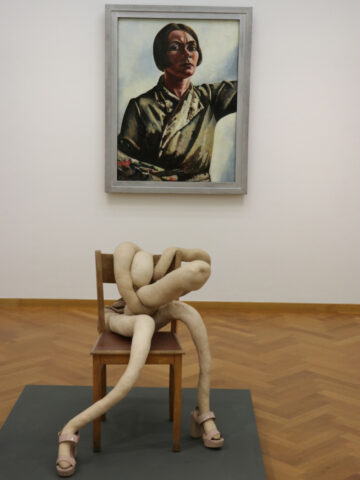

Some of the highlights in the Kunstmuseum Den Haag include:
Karel Appel — Child IV
Hans Arp — Cloud-Flowers
Francis Bacon — Paralytic Child Walking on All Fours, Seated Figure
Max Beckmann — Small cafe revolving door
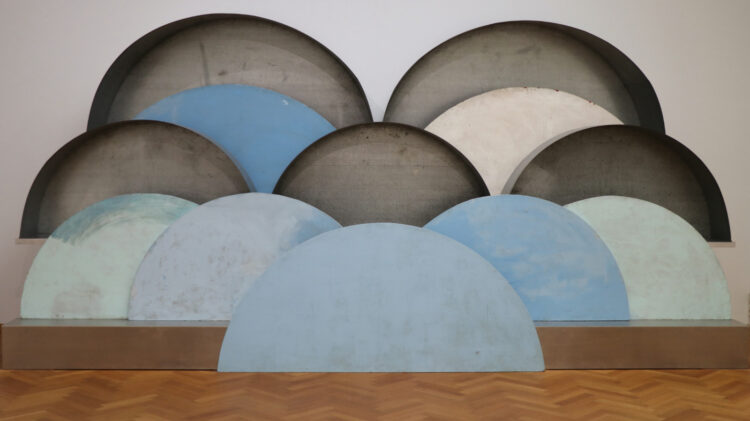
Louise Bourgeois — CELL XXVI, Spider Couple, Clouds and caverns
George Hendrik Breitner — The Rokin, Girl in a red kimono
Heinrich Campendonk — The Yellow Animal
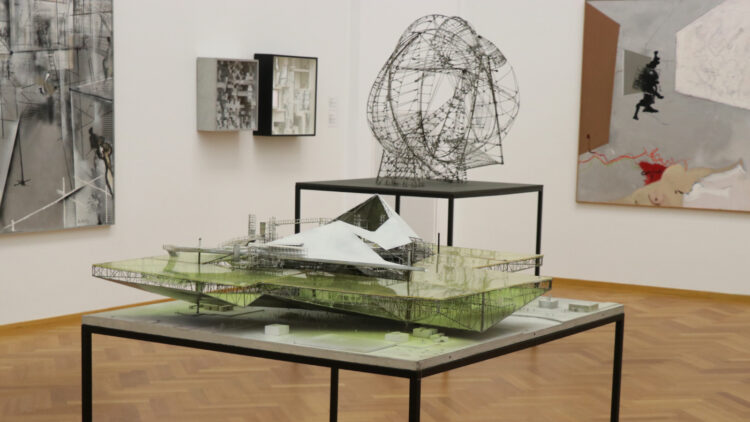
Constant — futuristic models: Hanging Sector, Little Labyr, and Mobile Ladder Maze
Edgar Degas — Étude de nu pour la petite danseuse habillée
Max Ernst — The Entire City
Mauritz Cornelis Escher — Relativity, Other World (many of his works are on display in the center of The Hague in the Escher in the Palace private museum)
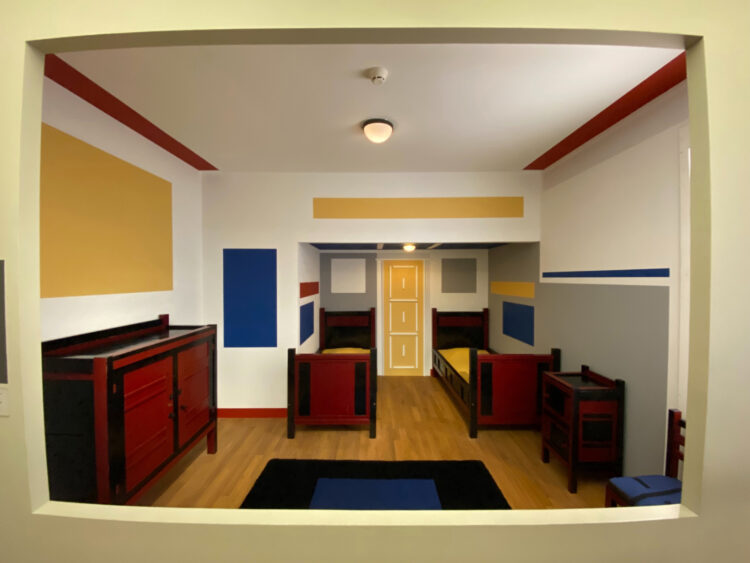
Vilmos Huszar — Compositie De Stijl, Couple Dancing, children’s room for Pieter Jan Christoffel Klaarhamer
Donald Judd — Several untitled works
Wassily Kandinsky — Bild mit weisser Form (Painting with White Form), Ein Zentrum (A Center)
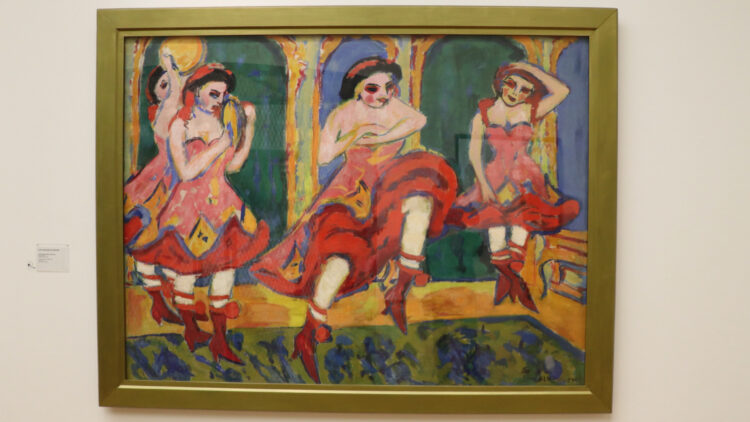
Ernst Ludwig Kirchner — Czardas dancers
Oskar Kokoschka — Giant Tortoises (Alligator snapping turtles)
Yves Saint Laurent — Mondrian Dress

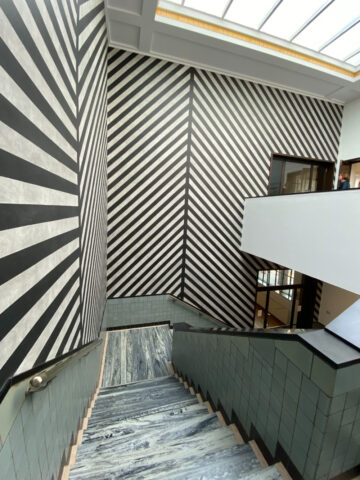
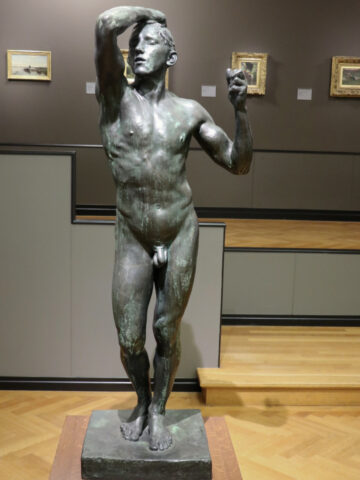
Sol LeWitt — Wall Drawing #1020, #1018, and especially #373 that decorates the staircase
Sarah Lucas — Nobby Bloke
August Macke — Drei Mädchen mit gelben Strohhüten I (Three Girls with Yellow Straw Hats I)
Hendrik Willem Mesdag — Bringing back the Catch (A large painting and many more of his works are on display in the Mesdag Panorama — halfway between the Kunstmuseum and Mauritshuis in The Hague)
Paula Modersohn-Becker — Self-portrait with hat and veil
Claude Monet — Wisteria, Fishing nets at Pourville, Quai du Louvre
Piet Mondrian — Victory Boogie Woogie and many, many more, as these are the works that made the Kunstmuseum Den Haag world famous.
Bruce Nauman — Carousel
Pablo Picasso — Sibyl, Arlequin, La femme au pot de moutarde (Woman with mustard pot),
Daniel Richter — Flash
Gerhard Richter — Inpainting (Grey)
Gerrit Rietveld — Child’s high chair, Red and Blue Chair (The one usually on display is from the Rietveld-Schröder House that he designed in the outskirts of Utrecht.)
Auguste Rodin — The age of bronze
Egon Schiele — Portrait of Edith (Edith was his wife, which probably explains the colorful dress rather than his usual unflattering nudes.)
Alfred Sisley — The Seine at Point du jour
Jan Sluijters — Moon night II, Laren
Paul Thek — Farewell to Washington Square (Self-Portrait)
Jan Toorop — Sea and Dune at Zoutelande, stoneware tablue Jong Holland,
Charley Toorop — Self-Portrait with Palette
Theo van Doesburg — model of a private house, Card Players
Vincent van Gogh — Poppy field, Garden at Arles
Jacoba van Heemskerck — Two trees
Rob van Koningsbruggen — Untitled
Jan Hendrik Weissenbruch — The Trekvliet, Beach Scene
Carel Willink — Wilma
The museum website has quite a comprehensive online catalog of the collection with many works described at length.
Kunstmuseum Den Haag Visitor’s Information
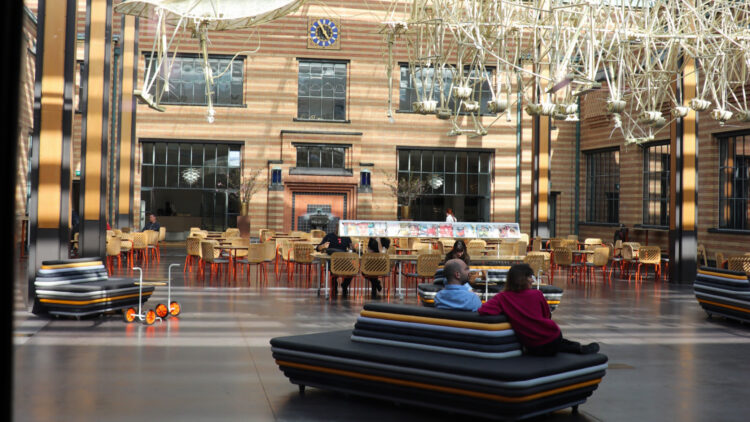
Opening Hours and Tickets for the Art Museum The Hague
The Kunstmuseum Den Haag is open Tuesday to Sunday from 10:00 to 17:00.
The museum is closed on Monday but usually open if a holiday. The museum is open on most public holidays but closed on Christmas Day (25 December) and only opens at 13:00 on New Year’s Day.
Tickets for the Kunstmuseum are €17.50 and include full admission to the permanent and all temporary exhibitions. It is not possible to see special exhibitions separately.
Students pay €14.50, but most youths 18 to 25 may enter for €8.75, and admission is free for children up to 18 years. The Dutch Museum Pass (Museumkaart) is valid (and sold) at the museum.
Time-slot reservations (free) are recommended but at quiet periods mostly not essential. Combination tickets with the Mauritshuis sometimes give small savings.
The very comprehensive audio guide is currently available for free and may be downloaded by anyone from the museum’s website.
Transportation to the Kunstmuseum Den Haag
The Kunstmuseum Den Haag, Stadhouderslaan 41, 2517 HV Den Haag, Netherlands, is around 3 km to the north of the center of The Hague. It is a pleasant half-hour walk or a quick ten-minute cycle from the Buitenhof area.
The entrance, which is not particularly well signposted, is via the glass-enclosed passage that splits the two water ponds. Berlage wanted visitors to forget the hustle and bustle of everyday life while approaching the calm of the art museum.
Public transportation is also very easy. Bus and tram stop Kunstmuseum / Museon is directly in front of the art museum. Bus 24 stops here but the frequent tram 17 (direction Statenkwartier) is probably the simplest option. Tram 17 also stops amongst others at the Central train station, Korte Voorhout (Mauritshuis and Escher in the Palace), and Buitenhof.
More in Den Haag / The Hague
- Mauritshuis — a top collection of Dutch Golden Age Old Masters’ paintings
- Kunstmuseum Den Haag — modern art including the largest Mondrian collection in the world.
- Louwman Museum — one of the best car museums in the world with the largest collection of veteran cars (up to 1904) in the world.

